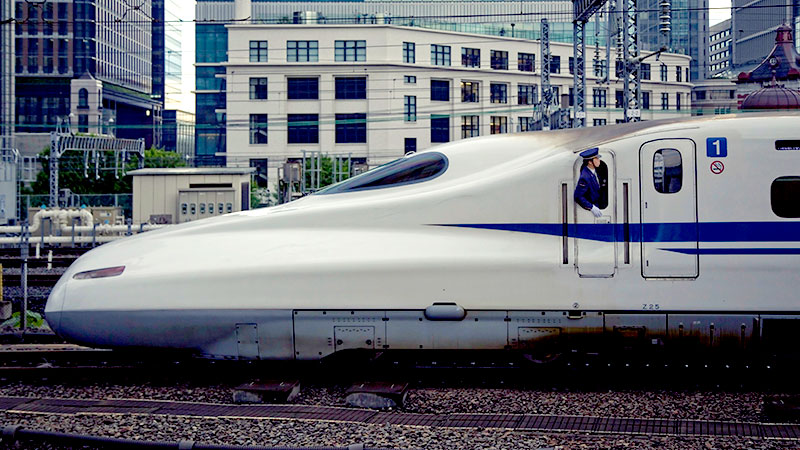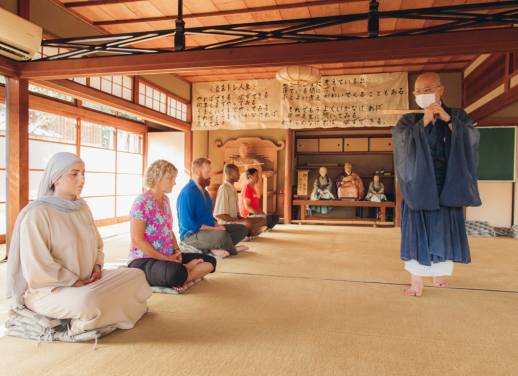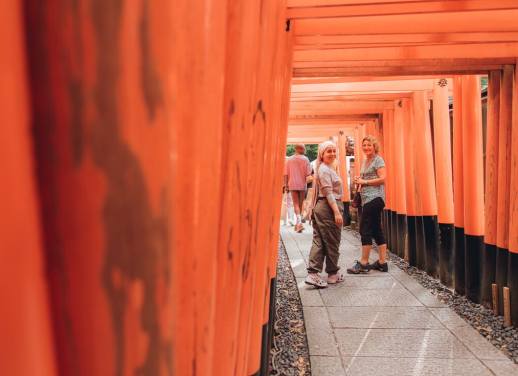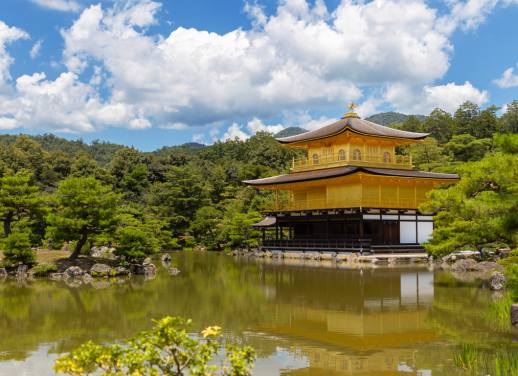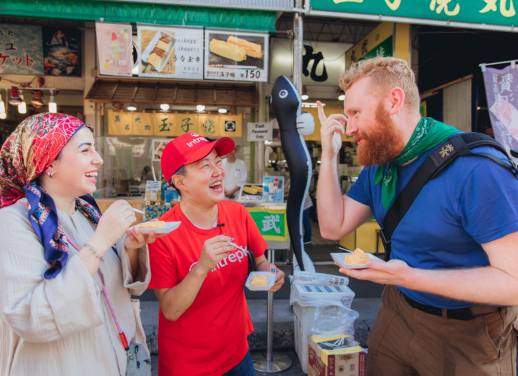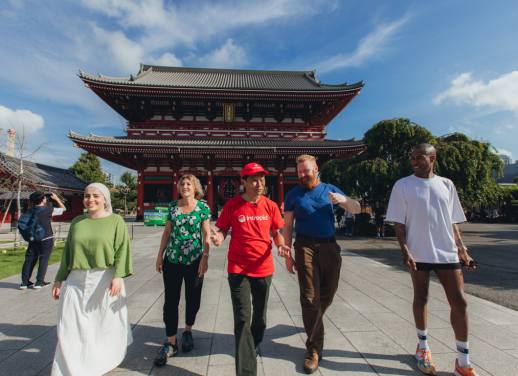Sumo? Tea ceremony? Robot bar? Cat café? Ninja school? While all worthy experiences, it’s riding the rails in Japan that rules them all.
As much a cultural, culinary and social experience as a mode of transportation, you don’t need to be a notepad-toting trainspotter to appreciate the allure of Japan’s world-leading rail network.
Beloved by many, there are countless websites, blogs, forums and Reddit threads filled with rail fans fawning over Japan’s trains and dissecting every bit of train-related news that hits the headlines.
There’s no doubt about it: Japan’s trains have reached cult status (something that will almost certainly never happen to Los Angeles’s buses).
A mode of transport frequently used by people from all walks of life, a train journey in Japan isn’t just for the budget traveller either.
In Japan, trains are a way of life for everyone from students to suited salarymen and well-to-do families. There’s even an ultra-luxury train scene in Japan evidenced by the fact that the new shiki-shima sleeper train is booked out more than a year in advance despite the journey costing a minimum of $3,500 AUD per person.
So what’s so good about Japanese trains anyway? Answer: just about everything.
Bullet trains
Reaching speeds of up to 320 kilometres per hour (200 mph), Japan’s bullet trains (or shinkansen) may fly across the country like bats out of hell, but somehow, they also manage to maintain a Zen vibe on the inside.
Super clean, eerily quiet, scarily efficient and ever reliable, Japan’s trains make your home country’s rail network look pretty shoddy (unless, of course, you happen to be from Germany).
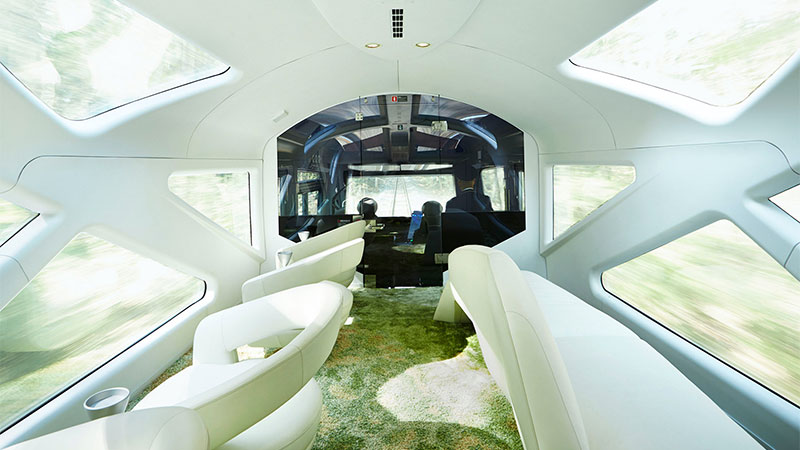
On a recent trip from Tokyo to Sendai, I rode the Tohoku bullet train that covers a staggering 304km (189 miles) in just over 90 minutes. With the fastest operating speeds of the entire network, this line is the Holy Grail for speed nuts who want to experience a bullet train at the height of its superpowers.
Apart from travelling at near-warp speeds, there are plenty of other features worth celebrating. Free, speedy Wi-Fi ensures passengers stay connected throughout the entire journey, nifty retractable coat racks guarantee your coat doesn’t get creased, and a trolley laden with beer and snacks is rolled out just after leaving the station.
Super clean, graffiti-free windows mean a limitless supply of mountain and countryside views are on tap (albeit those vistas are a little blurred due to the breakneck speed of travel). Essentially, Japan is responsible for creating a train utopia.
Train food
Just like plane food, regular train food can be hit and miss (but mostly miss). From a soggy ham and cheese croissant nuked in a microwave by a surly woman to a shapeless, tasteless, colourless blob that may or may not have been an attempt at an omelette (cheers India Railways – you did your best), eating train food is a universally risky proposition. It’s also a high-stakes game when considering the Spartan toilet scenario on most trains around the world.
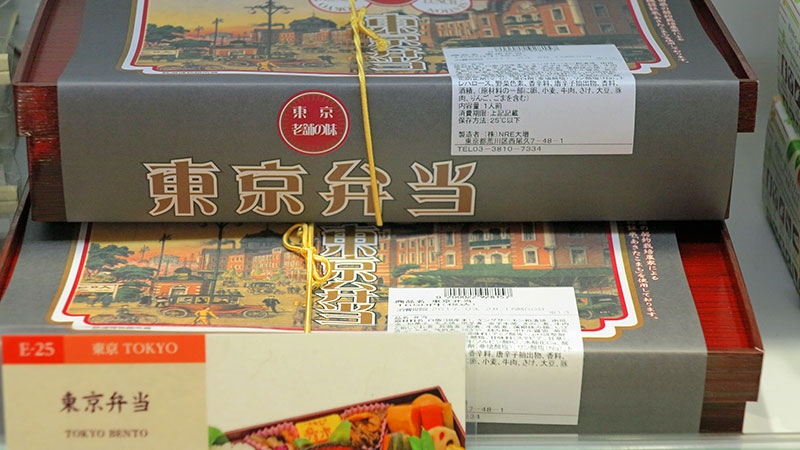
Responsible for some of the world’s greatest culinary experiences, it comes as no surprise that Japan also excels at train food. Apart from having some pretty good in-car dining and snacks on offer (fresh sushi, beer and other snacks are all easily procured mid-ride at reasonable prices), the train station bento boxes (known as ekiben) are where it’s at.
Immaculately presented in decorative boxes featuring beautiful artwork and typography, ekiben can be bought from train station platforms and retailers located in and around train stations. From tonkatsu (deep-fried pork cutlet) with cabbage to rice served with succulent chunks of boiled snow crab meat, there are hundreds of ekiben varieties to choose from. Some even come in miraculous self-heating boxes that magically heat up your meal when opened.
Getting to the train station early is a good idea because perusing the astounding variety of ekiben on offer can take time (surely many tourists have missed their train due to being sucked into a pre-ride ekiben shopping wormhole). You’ve been warned!
Find even more iconic Japanese meals at their well-loved convenience stores – here’s the low-down
Politeness
Unlike many other train journeys, respect is at the heart of a train ride in Japan. With most passengers going out of their way to ensure they don’t talk too loudly or take up too much space, a train ride in Japan is thankfully devoid of conflict or annoyance.
Having witnessed many bitter fights over seating allocation, armrest territory, luggage space, cutting the toilet line and unruly kids, Japan’s trains are mostly a conflict-free zone.
Boarding is almost always an orderly, considerate experience characterised by extreme politeness and care. With ticket inspectors bowing to the carriage before checking tickets and a crack team of cleaners lining up to bow to the carriage after completing a beyond-efficient cleaning mission, a Japanese train ride is like entering an alternative universe in comparison to long-haul train trips in most other countries.
Be sure to respect the tradition – bow to other passengers, say arigato, don’t put your feet on the seats and whatever you do, don’t leave the station without stocking up on ekiben.
Looking to brush up on Japanese etiquette? We’ve got you covered
The Green Car
Sure, the standard Japan Rail Pass offers exceptional value but if you’re happy to hand over a little more cash in exchange for a more deluxe experience then you can’t go wrong upgrading to the Green Car.
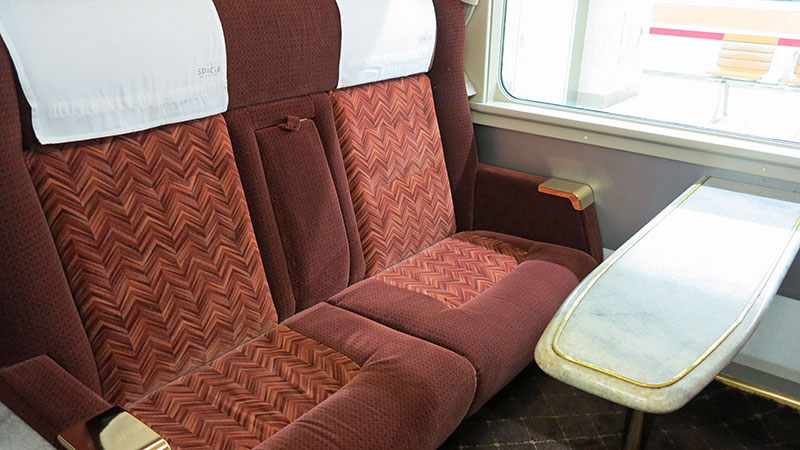
Ideal for small groups travelling together, sitting in the Green Car offers privacy and comfort above and beyond what you get in the main carriage. Think of it as a first-class ride shared with your friends.
Ensconced in your own private car, complete with USB charging outlets, climate control, oversized seats and a sturdy, fold-down table perfect for playing cards or arranging a bento banquet, it’s hard not to feel a little smug when you travel in a Green Car.

